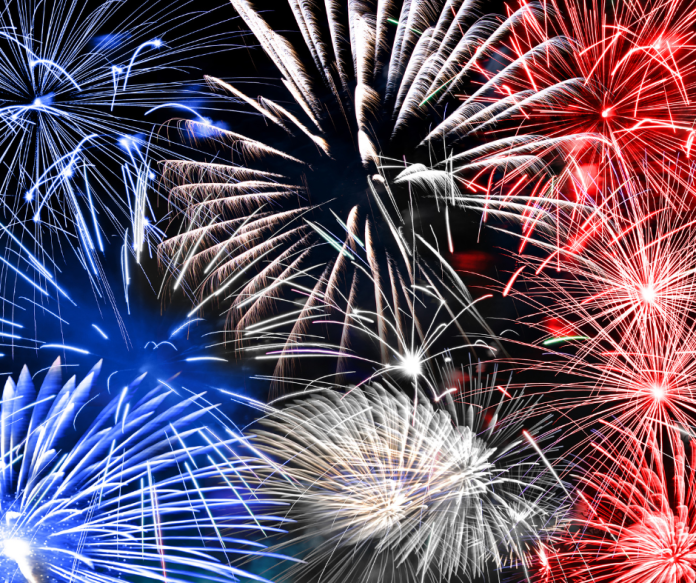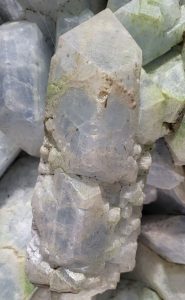
Who knew watching a fireworks display could be a lesson in minerals 101 and how minerals get their color? Fireworks are beautiful, loud and fun. But did you know that minerals are responsible for that beauty? From green to red, blue, yellow and white, here’s a look at how minerals give fireworks their colors.

What’s in a Firework?
Fireworks have an outside shell that’s called a mortar. It can be made of many things including cardboard, papier-mache or plastic.
Inside the mortar are compartments. The bottom compartment is filled with black powder (potassium nitrate, charcoal and sulfur) that will be the fuel for the firework.
The top compartment contains the pyrotechnic stars that make the colors and shapes we love to see. The stars are made of a fuel that burns and minerals and metals pressed together provide the color. The way the stars are arranged in the mortar provides the shape of the firework, like ovals, stars or rectangles.
Lighting the Fuse
While today’s fireworks have gotten more technical, a basic firework still contains just two fuses. There’s a fuse hanging from the firework.
That’s what is lit first. The firework flies into the sky and as the burning fuse reaches the bottom compartment, it ignites an internal fuse that makes the mortar explode.
Firework Colors
These colors come from single minerals and metals:
Blue is provided by copper (Cu) from chalcopyrite.
Green is provided by barium (Ba) from barite.
Red is provided by strontium (Sr) from celestite.
Yellow is provided by sodium (Na) from halite (rock salt).
These colors are made by mixing minerals and metals:
Orange = strontium (Sr) + halite (Na)
Lavender = strontium (Sr) + copper (Cu)
Silver = titanium (Ti) + zirconium (Zr) + magnesium (Mg)
Firework Effects
Firework colors, sizes and shapes are dazzling, but the special effects step up the game. Here are a few favorite effects and the minerals that make them.
Iron Filings (magnetite and hematite) + Charcoal = Gold Sparks Aluminum Flakes = Flashes Showering Down Aluminum Powder (bauxite) = Loud Bangs & Bright Flashes
Fireworks Road Trip

You can visit the world’s largest geode on Put-in-Bay Island in Ohio. There you descend 40 feet into a beautiful geode made of celestite, a strontium sulfate mineral and the source of the red color in fireworks. The geode is located at Heineman’s Winery and was discovered in 1897 while digging a well for the winery. It saved the winery during prohibition as the winery couldn’t sell wine, but could sell tours of the geode. The blueish-white celestite crystals vary in size from mere inches up to three feet wide. The interior of the original cave was much smaller, but some crystals were mined over the years.
Fireworks in History
Fireworks were made out of paper or bamboo in China 2000 years ago. They weren’t the beauties we have today. They produced only a flash and smoke when ignited.
The shape of modern fireworks mortars is similar to an ice cream cone. This mortar shape was started by the Italians in the 1830s. Credit also goes to the Italians for the invention of colored fireworks.
Be Careful!
 Fireworks are beautiful, but they are also dangerous. If you are a kid, never handle fireworks alone!
Fireworks are beautiful, but they are also dangerous. If you are a kid, never handle fireworks alone!
Each year injuries to kids and adults are reported from accidents with fireworks. Be sure to leave fireworks to the grown-ups to handle. Best yet, go with your friends and family to enjoy a fireworks display and leave the danger to those trained for it.
This story about how do fireworks get their color previously appeared in Rock & Gem magazine. Click here to subscribe. Story by Pam Freeman.















